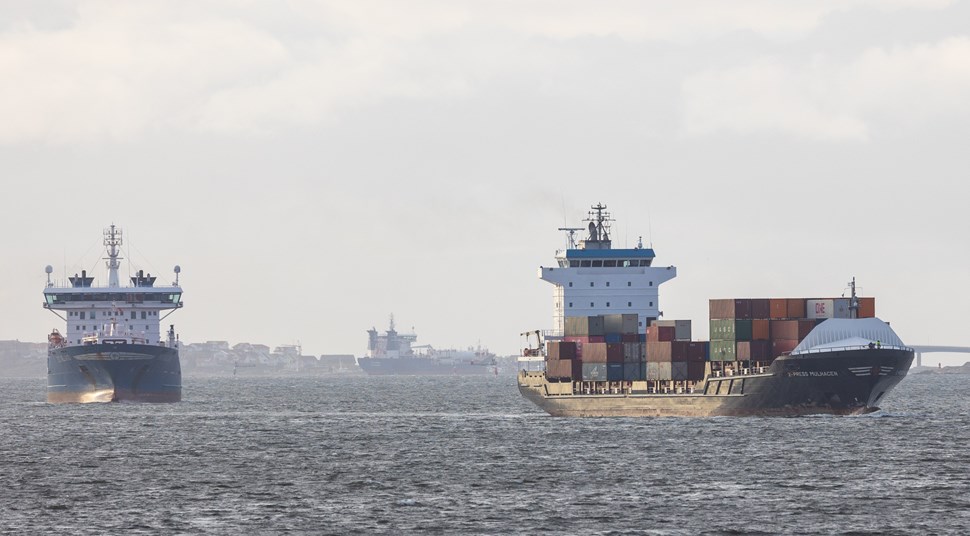The volume report recently published by the Port of Gothenburg reveals record-breaking container figures for November. All the more significant in a year marked by a host of unprecedented events, including the accidental blocking of the Suez Canal and the Covid-19 pandemic, which continues to hold the world in its grip.
“The most recent report shows a 7% increase in freight volumes from January to November, the highest figure since 2015. The November figures also show that 74,250 TEUs were handled, which is the highest November figure ever at the Port of Gothenburg,” said Elvir Dzanic, Gothenburg Port Authority chief executive.
The majority of the port’s container volumes are handled in the container terminal operated by APM Terminals Gothenburg. A minority share of the container volumes are handled at the RoRo terminals operated by Gothenburg RoRo Terminal and Stena Line.
As the end of 2021 is approaching and with the pandemic still in effect, the Port of Gothenburg – together with freight hub partners – has managed to remain open throughout, and with systems in place to ensure the volume of freight passing through the port can be increased sustainably.
On 12 December, the port was used as an emergency port for the first time in modern history. The bulk carrier Almirante Storni, loaded with timber, caught fire and after seven days at anchor off the coast it finally docked, and the fire could be brought under control. All the while, regular port operations could continue as normal.
“No port wants a burning vessel in its midst but once the decision had been made, we mobilised all our resources to help her to the quayside. We also knew that if any port was equipped to meet this challenge it was the Port of Gothenburg,” said Elvir Dzanic.
“Looking back it is with great relief and considerable pride that we can note that the whole operation was a success and most importantly the crew could disembark unharmed. The fact that everything went according to plan is testimony to the excellent collaboration between all involved actors. Once at quay, a lot of coordination on the maritime side was required for the day-to-day maritime traffic to remain undisturbed. On the quayside, APM Terminals were able to quickly create areas and transport routes for continued rescue work, while at the same time maintaining terminal production efficiency. It is reassuring to know that our crisis management system can cope,” said Elvir Dzanic.
Guaranteeing access to the world for industry
The welfare of Sweden as a trading nation is founded on commercial and industrial enterprises nationwide doing business globally and a great deal of the responsibility for this rests with the Port of Gothenburg. Despite a pandemic that is wreaking havoc in many quarters, logistics chains that are being put to the test, a shortage of containers, falling vessel capacity, and the ongoing impact of Brexit, Elvir Dzanic remains optimistic about the future.
“If the port were to close we would within days see widespread disruption in the supply of medicine, food, and other essentials. And industry would rapidly grind to a halt due to a lack of components. We can look back on the past year with great satisfaction and I would like to extend my heartfelt thanks to all those who work day and night at the port to ensure that even in uncertain times, industry can continue to thrive.”
Milestones at the Port of Gothenburg in 2021
Growth
- Continued volume growth and the securing of further market shares.
- Introduction of new rail shuttles to destinations including Piteå and Malungsfors in northern Sweden, and an increase in the number of departures for existing shuttles.
- New services, including the Hoegh Autoliners service to South Africa, Australia, and Asia, the Sea-Cargo service to Poland and Norway, the Wallenius Wilhelmsen service to the North American west coast, and the X-Press Feeders container service to Hamburg.
- An historically high turnover, with the Gothenburg Port Authority delivering a stable, predictable result for its owner, the City of Gothenburg.
- Joint venture with real estate partner Castellum to keep developing warehousing property at the best logistics location in Sweden.
- Additional land purchases to expand port operations at the outer port areas.
Environment
- 600 million kronor allocated specifically to carbon emission mitigation.
- The Tranzero Initiative. Working in partnership with Scania, the Volvo Group, and Stena Line, The Port of Gothenburg is seeking to accelerate the transition to fossil free fuels both on land and at sea within the Gothenburg region.
- Continued investments in rail transport, which has now reached a share of over 60% on the container side.
- Initiated work to enable hydrogen production in the port together with the Norwegian energy company Statkraft.
Digitalisation
- Development and roll-out of PortOptimizer Track & Trace, a new digital tool for real-time monitoring of freight as it moves through the system.
- Development and roll-out of Berth Planner, a new digital berth planning tool to ensure smart, safe calls at the Port of Gothenburg.
- Establishment of Project and Innovation portfolios.

























